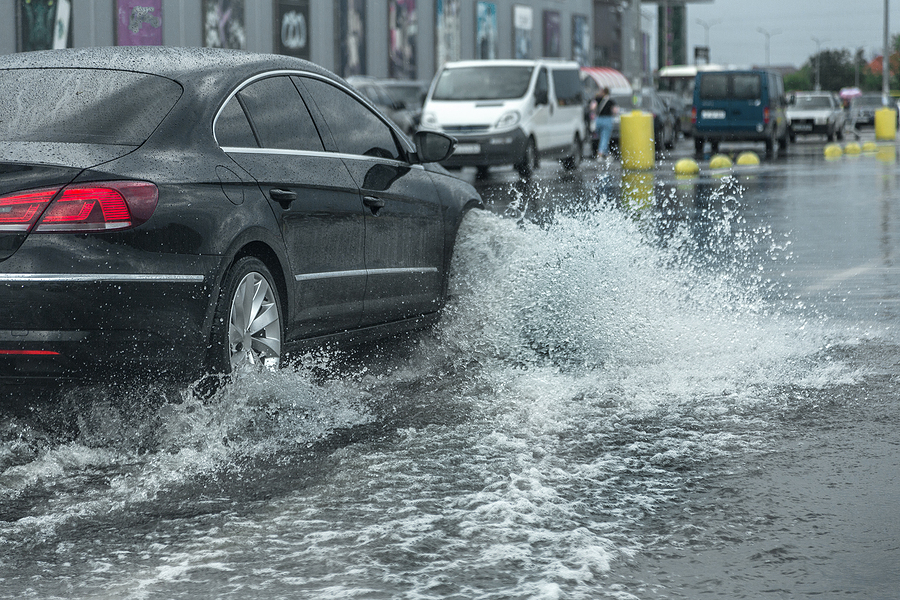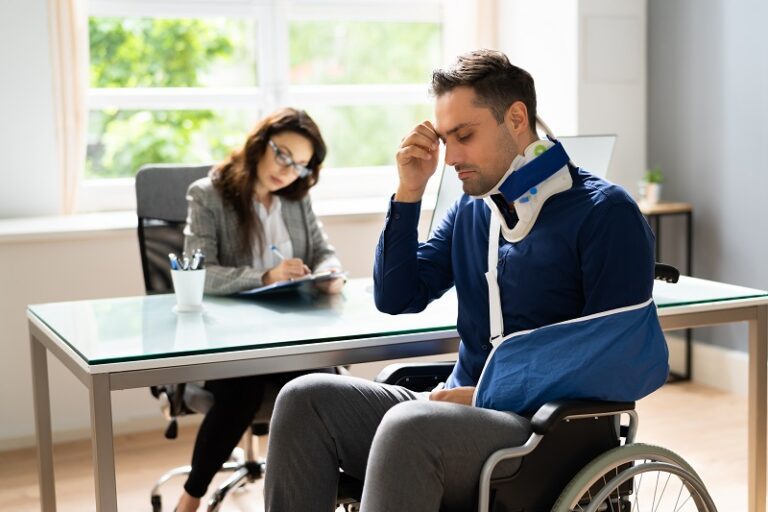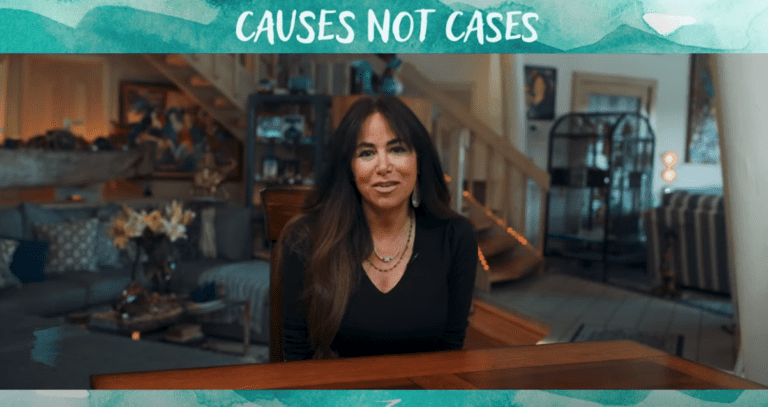
Southern California enjoys notoriously sunny weather. In fact, it typically rains less than 40 days per year in the region. When those rainy days arrive, traffic accidents often increase. Single-car crashes, multi-car crashes, motorcycle wrecks, bicycle accidents, and even pedestrian accidents resulting from wet pavement from storms can lead to dangerous and fatal accidents. Although far less common, spills can also cause wet pavement that leads to treacherous accidents.
[lwptoc]
Rainy weather certainly increases your risk for accidents and injury while on the roads. However, many drivers slow down to account for wet pavement; careless drivers pose the most danger when driving wet roads. Wet pavement contributes to thousands of collisions per year across the nation, especially those involving careless drivers.
If you have suffered injuries in an accident on wet pavement, consult an experienced accident injury attorney to determine if another driver contributed to your accident. Here we offer an overview regarding the dangerous aspects of wet pavement, how careless drivers cause accidents on wet pavement, and how accident injury lawyers typically help accident victims get compensation for their injuries.
Wet Pavement Creates Dangerous Road Conditions
The U.S. Department of Transportation (DOT) has devoted ample resources to studying the impact of road conditions on traffic accidents. Wet pavement certainly poses a hazard, but it’s likely far worse than you think. According to the U.S. Department of Transportation’s (DOT) Federal Highway Administration (FHWA), wet pavement contributed to the highest percentage of weather-related conditions and led to the highest rate of death and injury over a 10-year study.
The FHWA estimates that, on average, 21 percent of traffic collisions are related to poor weather, and 70 percent of weather-related crashes involve wet pavement. Wet pavement also contributes to almost 80 percent of weather-related crash injuries and 76 percent of weather-related crash fatalities.
Storms Aren’t the Only Cause of Wet Pavement
Thinking of wet pavement conjures up images of the occasional rainy day in San Diego and throughout Southern California. However, other things beyond rain showers can also cause wet payment. Roads do not immediately dry up after heavy storms. Roads may remain wet, especially in areas with standing water.
Fog and morning dew can also leave moisture on roads, making the pavement slippery. Additionally, wet pavement often exists in combination with other dangerous road conditions, such as high winds, fog, and decreased visibility.
Negligent truck drivers and/or trucking companies can also cause wet pavement. Improper driving and loading can lead to dangerous cargo spills. Tanker trucks carry a wide range of liquids, from dangerous substances, such as oil, gasoline, and ammonia, to consumables, such as milk, liquid sugar, fruit juices, and more. Wet pavement that is not caused by rain can be more dangerous. On dry, sunny days, drivers don’t expect to encounter a wet road, so they may not feel prepared to slow down when they come upon a spill.
How Wet Pavement Makes Driving Dangerous
Water and other liquids on the pavement affect driving. Sometimes, drivers can see the immediate danger and risk, and other times, the hazards of wet pavement may not appear immediately. Wet pavement increases the dangers associated with driving, especially with careless drivers around.
Wet pavement increases the dangers of driving through:
- Loss of Control – The friction between a vehicle’s tires and the pavement makes it easier to stop and control a car or truck. Water and other liquids reduce that friction, making it much more difficult to stop and creating a higher chance that a driver will lose control of his or her vehicle.
- Mixing With Other Substances – Vehicle exhaust leaves a film on the roads, and some cars leak oil, brake fluid, and other vehicle fluids. Rain, morning dew, and spills mix with these substances and create extra slippery roads, increasing the chance a vehicle will slide or skid when encountering wet pavement. Additionally, mudslides leave dirt on the roads that mix with water, creating wet, slippery pavement.
- Reduced Visibility – During the day, sunlight and even clouds reflect off wet pavement, often creating a glare that reduces visibility. Sometimes, glare on the road can temporarily blind drivers. At night, headlights also reflect off wet pavement making it more difficult for drivers to see.
- Standing Water – Heavy rainstorms leave areas of standing water throughout the city. Large puddles of water make driving dangerous because drivers have no way of knowing the depth of the puddles. Deep puddles greatly increase the chance that a vehicle will lose control or get stuck.
- Damaged Roads – Storms and water runoff erodes pavement causing cracks in the roads. Cracks sometimes transform into dangerous sinkholes or potholes. Additionally, broken pieces of pavement can create unsafe driving conditions.
Careless Drivers Hydroplane on Wet Roads
When people think of water on roads, hydroplaning often comes to mind. Hydroplaning often feels scary and dangerous because a car’s tires lose all contact with the road and slide across the water, causing the driver to lose complete control of their vehicle. Careful drivers often avoid hydroplaning on wet roads or in heavy rain. However, careless drivers tend to engage in risky behavior that drastically increases the risk of hydroplaning and causing an accident.
Careless driver behaviors that can lead to hydroplaning on wet roads include:
Speeding Through Puddles
Standing water and speed create the perfect conditions for a vehicle to hydroplane. Small puddles can pose just as much danger as large sections of standing water on a roadway. Careless drivers choose not to slow down when they see a puddle. As they speed through the water, their tires lose contact with the road and hydroplane across the water.
Speeding on Wet Pavement
Roads do not have to have puddles for vehicles to hydroplane. When enough water exists on a road, careless drivers who speed can hydroplane and lose control because they lose traction. Speeding typically refers to traveling over the posted speed limit, but when wet pavement is present, speeding also refers to traveling too fast for the conditions of the road.
Failure to Change or Rotate Tires
Preventative maintenance plays a large role in keeping vehicles safe on the road. Careless vehicle owners who do not rotate tires as recommended or replace their tires as needed put everyone who shares the road at risk for an accident from hydroplaning on wet roads. Old and worn tires lose their tread, which leads to less traction on wet roads. Once the tread becomes too low or completely worn away, tires will immediately skid or hydroplane when wet pavement or standing water exists.
Traffic Accidents on Wet Roads Lead to Severe Injuries and Death
The FHWA estimates that accidents on wet pavements lead to almost 325,000 injuries and more than 4,000 deaths each year. Slippery roads, damaged roads, heavy traffic, and struggles with visibility create dangerous driving conditions that increase the risk for treacherous accidents.
Drivers and occupants can suffer minor to severe injuries, but other individuals can suffer an injury during a wet pavement accident as well. Pedestrians, cyclists, and motorcyclists also face the risk of injury when careless drivers cause accidents on wet roadways.
Examples of injuries that occur during wet pavement accidents include:
Orthopedic Injuries
Some orthopedic injuries prove minor. A broken bone can heal quickly after someone visits a San Diego emergency room. However, when wet pavement accidents occur at high speed, those involved can face multiple fractures in one or more bones throughout the body, or more severe fractures that require surgical treatment or longer healing time. Severe orthopedic injuries typically require corrective surgery that sometimes includes screws, plates, pins, or another type of surgical hardware. Victims can face lifelong complications at the site of the break, including arthritis and associated pain and discomfort.
Brain Injuries
Head traumas that cause brain injuries constitute some of the most dangerous of all accident injuries. Hydroplaning vehicles can jerk around and cause indirect head traumas, but drivers and occupants can also hit their heads during the impact of a crash. Even when cyclists or bikers wear a helmet, they may suffer a traumatic brain injury if they hit their head on the pavement during a crash. Those who suffer traumatic brain injuries face long-term struggles with cognitive and motor functions. Children with TBIs face developmental issues when they suffer permanent brain damage.
Back and Spinal Cord Injuries
Wet pavement accidents often include out-of-control vehicles, leading to all types of movements that contort the body in a variety of unnatural ways. The impact of a collision can lead to fractured vertebrae, herniated discs, and slipped discs. In the most severe accidents, a piece of broken bone gets lodged in the spinal cord or cuts part of the cord leading to a spinal cord injury. Spinal cord injuries can prove costly and may result in severe permanent damage. Depending on the location of the injury along the spinal column, victims face functional loss in some or all of their bodies.
Internal Injuries
High-impact traffic collisions on wet pavement sometimes lead to internal injuries, which can prove fatal when left untreated. Organ damage and broken ribs rank as the most dangerous. Massive internal bleeding from puncture wounds can lead to organ failure, and broken ribs can also cause more internal damage.
Soft Tissue Injuries
Sprains, strains, and tears of ligaments, tendons, and muscles constitute the most common accident injuries. Many soft tissue injuries prove only minor and heal with rest. However, severe soft tissue injuries can leave accident victims with chronic pain and discomfort. Tearing a ligament or tendon sometimes requires surgery, potentially leaving victims with lifelong struggles with mobility and pain.
Amputations
Anyone involved in a wet pavement accident faces a risk of amputation if injuries are severe. When limbs get crushed in an accident, they lose blood flow and begin to die. Sometimes, doctors can restore blood flow and revive a limb. However, doctors sometimes need to amputate as a last resort to prevent infection from spreading throughout the body. Amputees must cope with the physical and emotional trauma of losing a limb, as well as learning how to use a prosthetic device.
Recovering Damages After a Wet Pavement Accident
Many wet pavement accidents involve only a single vehicle, but many others involve two or more parties, whether in cars or trucks or on motorcycles, bicycles, or foot. If you’ve suffered injuries because of someone’s negligence, you have the legal right to seek compensation for damages related to your injuries. Careless drivers that engage in the previously mentioned behaviors, such as speeding or failing to change old tires, could bear liability for damages if another driver’s negligence caused your injuries. An experienced accident injury attorney can help advise you on the best steps to take for your situation.
Each accident injury claim involves different facts and circumstances, so damages vary among cases.
Wet pavement accident victims commonly receive compensation for:
- Medical treatment costs, including ambulance service, emergency room treatment, surgery, hospitalization, diagnostic testing, prescriptions, and follow-up doctor visits
- Estimated future medical expenses if someone suffers permanent injuries that need continuous care after a wet pavement accident
- Lost wages from missing work due to injuries, hospitalization, and recovery
- Lost earning capacity when wet pavement accident victims suffer a permanent injury that prevents them from returning to their jobs or line of work in the future
- Physical pain and suffering
- Emotional distress
- Loss of enjoyment of life
- Reduced quality of life
- Loss of consortium
- Scarring and disfigurement
If you have lost a loved one in a wet pavement accident, you could receive some damages above and additional money for funeral and burial expenses.
Punitive Damages
Punitive damages refer to compensation that accident victims may receive when the defendant intentionally harms another person or acts with gross negligence. Careless and reckless driving demonstrates a disregard for the law and the safety of others on the road. Courts save punitive damages for rare occasions to punish dependents for their misconduct. If a careless driver caused a wet pavement accident, you may qualify for additional compensation. If you hire an accident injury attorney, your attorney can help review the facts of your case, investigate the circumstances that led to the wet pavement accident, and advise you on whether punitive damages should be included in your claim against the negligent party.
Contact an experienced car accident attorney today if you still need information about your case or are seeking to file a claim for an accident that someone else caused.







